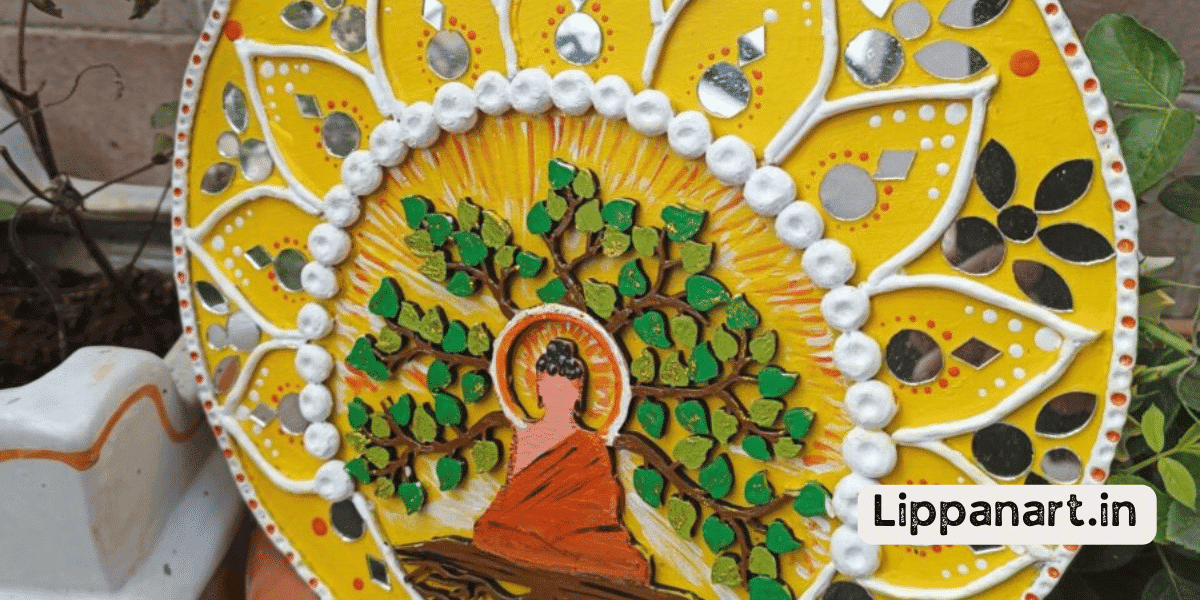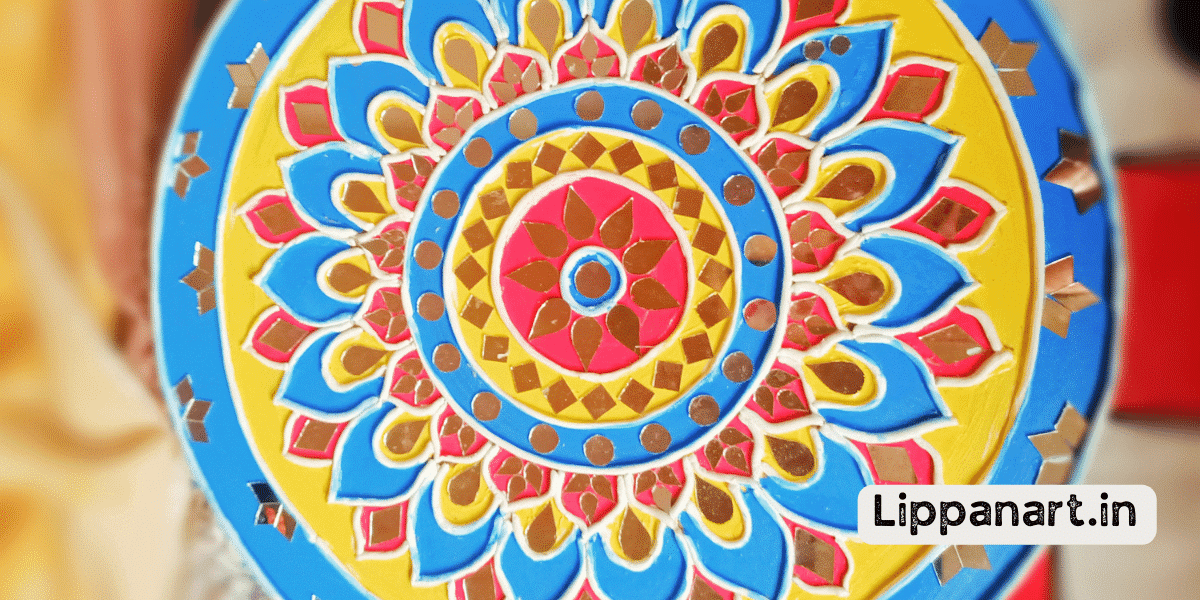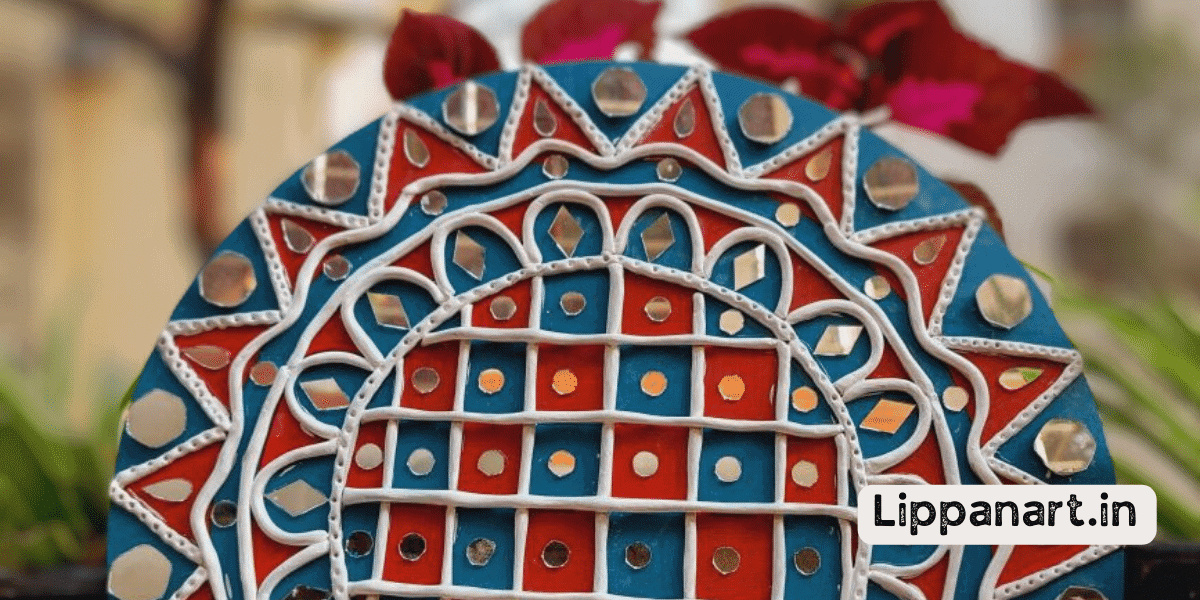You may not have heard of it, but Lippan art is a traditional art form from India that dates back over 5000 years!
Exporting this unique art form is an exciting way to bring a piece of Indian culture to the world.
In this article, we’ll discuss the legal and logistical considerations of exporting Lippan art and strategies for marketing it in international markets.
Key Takeaways
- Exporting Lippan art requires necessary permissions and licenses, as legalities vary from country to country.
- Securely attach all pieces and use high-quality materials for durability and quality when preparing Lippan art for international markets.
- Utilise e-commerce platforms and social media to market Lippan art abroad and attract attention from a wider audience.
- Plan for shipping logistics, research the destination country’s requirements and import taxes and consider using a reliable freight forwarding company for shipping Lippan art.
Lippan Art: An Introduction
You’re about to learn all about Lippan Art: its history, techniques, and why it’s become one of the most popular exports in the art world.
Lippan art is a type of Indian art form that has been practised for centuries. It’s characterised by its intricate designs, which are created by applying a mixture of mud, cow dung, and water onto a wall. The art has colourful glass and mirror pieces, bells, and other decorative items. The product is then covered with cloth and finely embroidered with colourful and intricate designs.
The technique of Lippan art is very labour-intensive, but the result is a stunning piece of art that will draw attention. It’s also one of the most popular exports in the art world, as it’s an affordable and unique craft. It’s often used to decorate homes, temples, offices, etc.
The popularity of Lippan art has led to the emergence of many workshops specialising in this product. These workshops offer custom designs and workshops for those who wish to learn the technique. The art is also featured at many festivals and is now popular in many tourist markets.
Lippan art is a beautiful and unique art form that will bring a unique touch to any space. With its intricate designs, colourful textiles, and embroideries, it’s a product that will be admired for years to come. Plus, with its bells and mirror pieces, it’s sure to create a one-of-a-kind look.
The Export Process: Legal Considerations
When exporting Lippan art, it’s important to understand the legal considerations involved. The art form is an ancient tradition passed down through generations of Gujarat camel herders and pastoral communities. Part of the process involves intricate wood carving to produce commercial products like wall decor and jewellery for sale.
For Lippan art to be exported, it must be done through a family-run business with the necessary permissions and licenses.
The legalities of exporting Lippan art vary from country to country, and the exporting business must have the relevant documents in place before they can ship the art. These documents sometimes include certificates of origin, export declarations, and invoices. In addition, the exporting business must be aware of the restrictions and requirements of the target country. This may include a ban on the import of certain products or tariffs for the shipment.
Finally, the exporting business must also be aware of any restrictions on the type of products that they’re allowed to export. It’s important to know the regulations on art shipments in different countries.
Understanding the legal considerations of exporting Lippan art is essential for the business to operate successfully and avoid legal issues.
Preparing Lippan Art for International Markets
Have you ever wondered how to prepare Lippan art for international markets and what considerations you need to consider?
Lippan art is a traditional Indian craft, using pieces of mirror, glass, and wood, with a mix of camel dung, to form wall hangings or small sculptures. To prepare your Lippan art for international markets, you need to understand the requirements of international buyers and be prepared to meet their expectations.
The first step is to ensure the pieces are securely attached and there’s no chance of them falling off. You should use the best quality of wood available to ensure the Lippan art is durable and of high quality. The camel dung should also be of the highest quality, as this will be an important factor in the overall look and feel of the piece.
You must also package the Lippan art securely for shipping. This includes using the right materials, such as bubble wrap, and ensuring the piece is secure and won’t be damaged in transit. You should also consider selling your pieces through online platforms such as Amazon, which will help you reach a wider audience.
Marketing Lippan Art Abroad
You can reach a global audience by marketing your Lippan art abroad. Taking steps to make your art accessible and visible is key to success. Here are three tips to help you get started:
- Take advantage of e-commerce opportunities. Platforms like Amazon India provide a great platform for you to showcase your Lippan art. You can create a free store, set up your listings, and sell your pieces to a global audience.
- Leverage social media. Social media platforms like Instagram and Facebook empower artists to reach a global audience. Share photos and videos of your art pieces and their stories to attract attention.
- Utilise the influence of camels. Camels are a big part of the Lippan kaam art tradition. Connect with camel owners for advice and assistance in promoting your art abroad. You can also feature camels in your designs to appeal to an international audience.
Shipping and Logistics: A Crucial Step
Shipping and logistics are crucial steps in exporting your Lippan art abroad, so plan accordingly. You need to consider different factors like the craft kit required, the embroidery styles used, and the materials such as camel hair wool and chandelier bells.
You should also ensure that your artwork meets the destination country’s requirements. Research applicable laws and regulations to ensure a hassle-free export of your Lippan art. This will help you avoid any unforeseen delays or issues. Also, be aware of any import taxes or duties that may apply.
Consider using a reliable freight forwarding company to ensure seamless shipping and delivery. Finally, check the destination country’s import regulations and prepare all necessary documents, such as permits and certificates.
With thorough planning, you can guarantee a successful export of your Lippan artwork to other countries.
Cultural Sensitivity in Lippan Art Exports
When exporting Lippan art abroad, it’s important to be mindful of cultural sensitivities and customs. Here are some key points to consider:
- Animal herd: Lippan art often features images of animals from the agricultural communities where it originated. Respectfully recognising these animals and their importance to the farming communities in which they live is important.
- Carved wood: Many Lippan art pieces are carved from wood, making them durable and beautiful. It’s important to treat these pieces with care and respect, as they’re a representation of the culture and heritage of the local communities.
- Durable textiles: Many Lippan art pieces are made of durable textiles designed to last for generations. It’s important to use the proper techniques for packing and shipping these pieces to ensure they can be enjoyed for years.
Respecting the culture and customs of the people from which these pieces originate is essential when exporting Lippan art abroad. By being mindful of the importance of these pieces, we can ensure that they remain a part of our cultural heritage for generations to come.
Conclusion
Exporting lippan art can be a great way to bring new life to the craft and to reach a wider audience. Despite the challenges, it can be a lucrative endeavour that pays off in the long run.
Any artist can succeed in their export venture with the right preparation and marketing strategies. In fact, according to the Crafts Council of India, lippan art exports have grown by an impressive 20% in the last five years.














